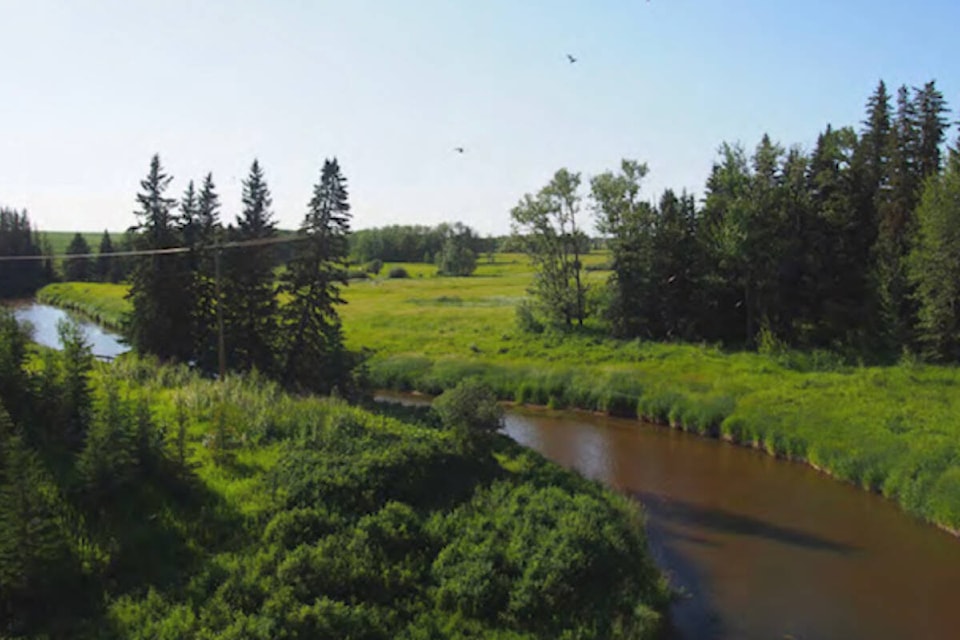Conditions have been much different on the Medicine River this year with another year of water testing underway.
Near-drought conditions were the story last year when testing took place at three locations on the slow-moving river that winds through central Alberta from headwaters north of Rocky Mountain House before linking with the Red Deer River just east of Gleniffer Reservoir.
Medicine River Watershed Society (MRWS) and Red Deer River Watershed Alliance (RDRWA) have joined forces on the testing initiative that last year saw the river tested 15 times at three locations. Water temperature, turbidity (cloudiness), dissolved oxygen, ammonia, phosphorous, pH and chloride were all tested.
Test results indicated that the river and its tributaries "generally met acceptable ranges and are considered in good health," says RDWA's report on the results.
Testing was done north of Eckville at the Rainy Creek bridge, at a creek south of Eckville and near Spruce View at the confluence of the Red Deer and Medicine Rivers.
Coulter recommended monthly testing and additional assessments following rainfalls and that laboratory testing be used to get more precise measurements.
Both societies agreed and with help from $7,500 in energy industry grants a new round of testing began in April.
MRWS president Dana Kreil said it is hoped testing this year —the third year samples have been taken – will provide a wider range of data. Last year, testing began too late to measure the impact of spring runoff but samples were taken earlier this year.
As well, weather conditions are considerably different, which could provide a more complete picture of the river's health.
Kreil said last year was extremely dry and the river was low.
"We're hoping for a bit more varied weather to test in," she said. "That might provide a a different story than we had last year."
The two watershed groups are also teaming up to take samples that indicate the shoreline aquatic species present.
"I call it the critter count," said Kreil, who participated in collecting the samples last month. "We look at the species in the mud. You can tell a lot about the river's health from those species."
The work takes advantage of the Canadian Aquatic Biomonitoring Network, a collaborative network maintained by Environment and Climate Change Canada that provides nationally standardized protocols to monitor the health of aquatic ecosystems by sampling the organisms that live there.
Kreil, who is a Lacombe County councillor, said the data will be compiled in the fall and presented to the public in a series of presentations early next spring.
